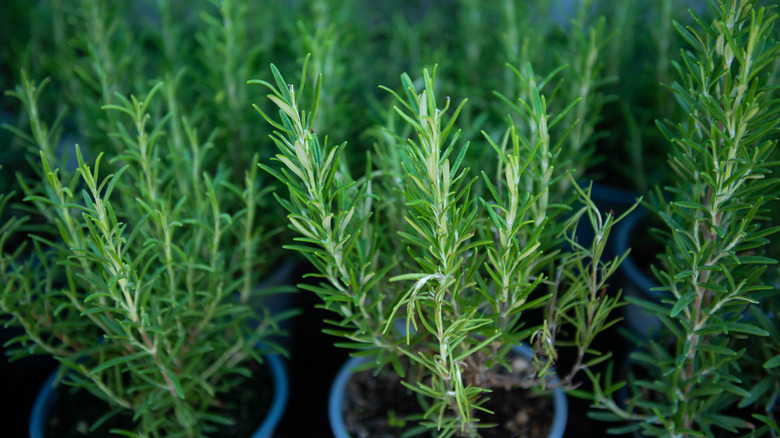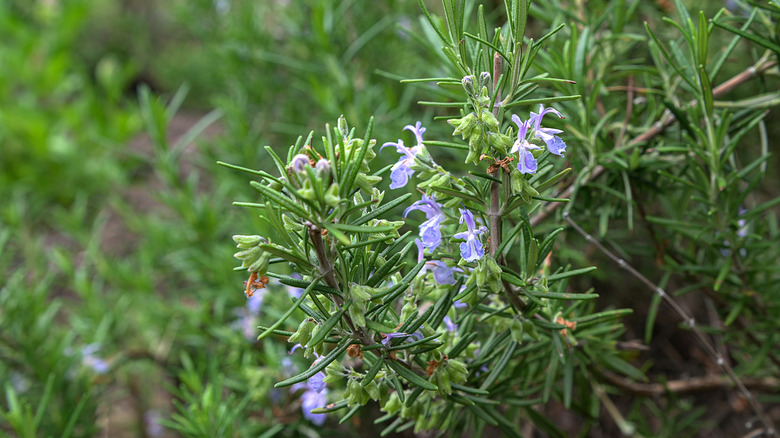Should You Grow Rosemary In The Ground Or In Containers? Here's The Best Way To Do It
Rosemary (Salvia rosmarinus) is a popular choice for home herb gardens, but whether it grows successfully depends on where and how you plant it. If you're wondering whether rosemary grows best in the ground or in containers, the answer hinges on your local climate. Rosemary thrives in full sun and well-drained soil, making it ideal for in-ground planting in warmer climates. It does not tolerate temperatures below 20 degrees Fahrenheit, and exposing it to cold temperatures will damage the plant.
In-ground rosemary can survive year-round in USDA Hardiness Zones 8 through 10. If the conditions mimic its natural habitat, it can grow into a robust shrub, offering years of culinary and ornamental use. If you live in a region that's colder than this range, keeping rosemary in a pot allows you to protect it from freezing temperatures that could otherwise kill the plant. Just make sure you also keep it well-watered, with access to sunlight, and in its preferred soil.
Gardeners in any climate may start rosemary in a container to help young plants establish before transferring them to a garden bed. Starting in pots also helps prevent root rot, which is caused by overly wet soil during the winter months, and can be one of the reasons your rosemary is turning brown. Once you know your zone and conditions, it's easier to decide which growing method will give your rosemary the best chance to thrive.
The best way to grow rosemary based on your garden (and climate)
To grow healthy rosemary in the ground, choose a sunny spot with excellent drainage. It's best to plant rosemary in loamy soil with a slightly acidic pH, ideally somewhat below 6.0. Space plants 2 to 3 feet apart to allow airflow and reduce the risk of mildew or fungal disease. A seemingly harmless mistake to avoid with garden rosemary is dividing it once it's established. Rosemary grows as a shrub, so it doesn't need to be split up. In-ground rosemary requires little care beyond occasional pruning for shaping after it's grown.
If you're growing rosemary in a container, choose a pot with drainage holes. You can help your rosemary plants thrive with one simple addition to the soil: sand. It will keep the soil light and airy because it increases the open space between soil particles. When you move the pot indoors in the winter, it's best to place it in a sunny south- or west-facing window (or use a grow light for supplemental lighting). Since rosemary dislikes getting its roots soggy, try using terracotta pots, which allow excess moisture to evaporate more easily. When the weather warms, move your potted rosemary outdoors gradually so it can acclimate to full sun as the seasons change.

